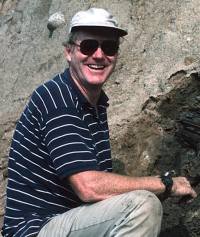S.T. Lee Lecture 2009

Antarctica and the ice age puzzle
Professor George Denton, 15 May 2009
Libra Professor of Earth Sciences, University of Maine, United States of America
View the talk here: 2009 S.T. Lee Lecture
Synopsis of lecture
The concept that Earth has experienced a great ice age emerged more than a century ago. In recent decades geological studies have revealed repeated major ice ages over the last million years, most evident in the Northern Hemisphere. Each ice age lasted about 100,000 years. Each featured a long cooling leg leading to a glacial maximum that was terminated abruptly by a much shorter warming leg. During each maximum, ice sheets spread across northern North America and Europe, sea level dropped about 120 m, and alpine glaciers advanced onto the forelands of high mountain ranges (including the Southern Alps) in both polar hemispheres. The glacial/interglacial global temperature change was about 6 degrees C and atmospheric CO2 levels rose and fell by as much as 100 ppm by volume, closely tracking temperature variations. Superimposed on the 100,000-year pulse beat were oscillations linked with variations in Earth’s orbit. In this lecture I will discuss the role of Antarctica and the Southern Ocean (including southern New Zealand and South America) in recent global ice ages. Particular attention will be focused on the pronounced warming between 18,000 and 11,700 years ago, when the southern part of the planet switched from a glacial climate to the interglacial conditions of today. Determining the origin of this extraordinary warming event lies at the heart of solving the ice age puzzle.
George Denton
George Denton is Libra Professor of Earth Sciences, University of Maine. He is also an Adjunct Senior Scientist at Lamont-Doherty Earth Observatory of Columbia University. George’s main research interest is the geological history of large ice sheets and smaller mountain glaciers. Another interest is abrupt ocean-atmosphere reorganizations in glacial cycles. As a consequence he has published on extensive field mapping of glacial deposits and features in Antarctica, South America, New Zealand and the Arctic. An early seminal work was the Denton and Hughes book “The Last Great Ice Sheets” published in 1981. In recent years his research has focused on the timing and mechanisms of abrupt climate change, and particularly the interaction between the hemispheres. In 1990, George was presented with the Vega Medal in Stockholm. He was elected as a foreign member of the Royal Swedish Academy of Sciences in 1996 and as a member of the US National Academy of Sciences in 2002. He was awarded an Honorary Doctorate by Stockholm University in 1995 and by the University of Edinburgh, Scotland in 2005. George Denton completed his undergraduate studies at Tufts University and earned his MA and PhD degrees in Geology from Yale University.
